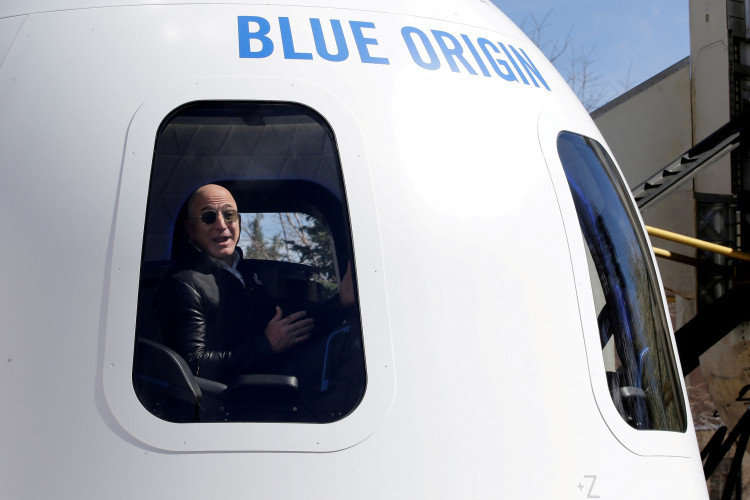Blue Origin, Jeff Bezos' rocket company, announced Wednesday that the first flight aboard its New Shepard rocket, equipped to carry up to six tourists, would take place on July 20, with one seat auctioned off to the highest bidder.
According to a tweet posted Wednesday morning, anyone can place a bid on the company's website. The first round of bidding will take place from May 5 to May 19, and the bids will be sealed, which means no one will be able to see how much other people bid. The contest will end with an unsealed round of bidding on May 19, followed by a live auction on June 12.
The auction proceeds will be donated to Club for the Future, a youth-focused foundation that encourages children to study science and technology.
Blue Origin did not specify how much other seats on the New Shepard rocket would cost, but tickets are expected to be in the hundreds of thousands of dollars.
The self-flying New Shepard rocket and capsule will transport passengers to suborbital space, beyond what is often referred to as "the edge of space."
Unlike orbital flights, the capsule will not actually circle the planet, but people will experience a few minutes of weightlessness at an altitude of more than 62 miles above Earth before the capsule and its parachutes touch down.
Blue Origin was founded 21 years ago by the Amazon billionaire. New Shepard, named after the first American in space, Alan Shepard, has flown 15 tests successfully since its initial flight in 2015 but has never flown with a crew on board.
Its most recent flight, in April, served as an "astronaut training for future customer flights." Company executives acted as astronauts and performed a slew of pre-flight checks before exiting the spacecraft before liftoff.
Blue Origin's astronaut capsule is designed specifically for space tourists, with each reclined seat having its own wide window that extends over three feet tall. The seats also have their own push-to-talk buttons, allowing passengers to communicate with ground control, as well as tablet-sized screens fixed to the border of each window, which display live flight data and video from the launch.




